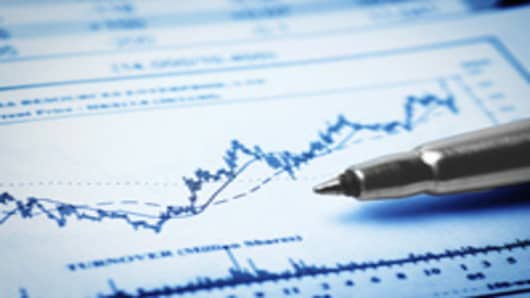Financial markets are likely to resume their high volatility in September despite the current period of relative calm, and are approaching "Lehman levels" of stress following the downgrade of the US by credit ratings agency Standard & Poor's, according to a new report from HSBC.
The report, from the bank's director of quantitative FX strategy Stacy Williams, says that using systematic indicators to examine the underlying causes of last week's large moves shows that there are "deep and profound stresses" in the market.
The S&P 500 index plunged from 1350 to 1100 last week, as investors fled from risk assets into safe havens, but had rebounded to around 1200 by Monday.
"In many ways, the recent moves have simply been markets catching up with the bad news from the US," Williams wrote.
HSBC used "surprize indices", which measure market expectations against actual economic data, to test recent movements. The bank found that while the markets have been "appropriately pessimistic" for some time, they have routinely ignored bad data coming out of the US.
"For several months the market has been significantly overestimating the strength of US economic activity. Whilst it may not have felt like a period of runaway euphoria, the level of pessimism was clearly not high enough. This is in stark contrast to the behaviour during the worst of the financial crisis," Williams said.
"In other words, from March until last week the data was just not being priced in. This is worrying as it indicates that the extreme market moves seen last week were justified and not simply the market having a kneejerk over-reaction to the S&P downgrade," she added.
Even though markets have begun to catch up with the bad news, significant stresses remain, Williams wrote.
Cross-asset correlations are extremely high, a clear sign of financial stress, according to the report. In periods of crisis, normally independent asset classes see their correlations tend towards one, as global economic concerns dominate price moves and override micro-level fundamentals.
Other signs, such as the rising cost of safe havens, including gold , the Swiss franc and the Japanese yen , and the widening of bid-ask spreads, add to the sense that markets remain strained.
"Taken all together, these indicators make for a very ugly reading. The last time we saw such conditions was after the Lehman bankruptcy," Williams said.
The current period of calm could be the eye of the storm, and although many observers feel that the panic was just a belated reaction to the downgrade of US debt, there may be more bad news to come, she wrote.
"We should be aware of the possibility that this may be the beginning of the next leg down of the financial crisis," she added. "If this is the case we should not expect the calm to remain once markets return to full flow in September."


